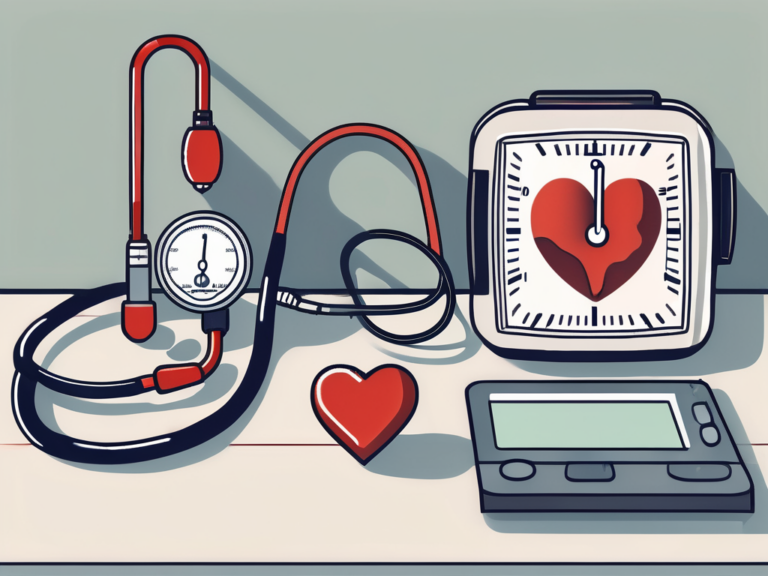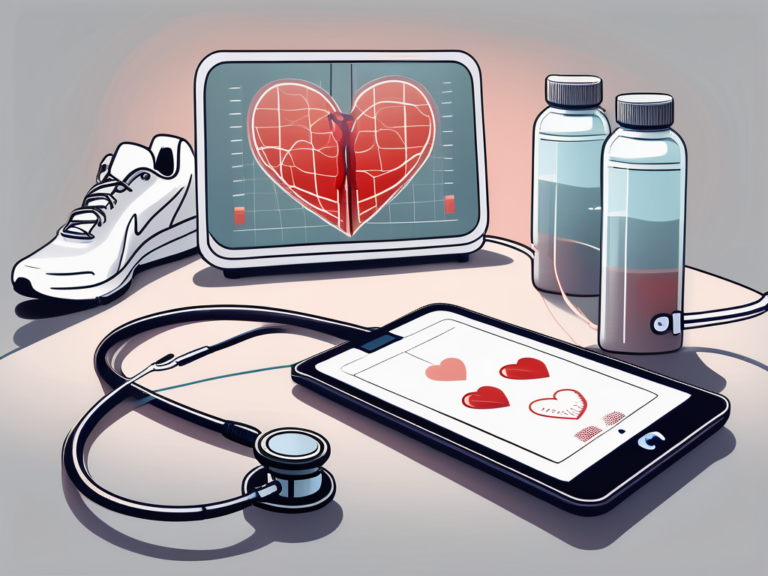How to Prepare Your Home After Open Heart Surgery
Going through open heart surgery is a major life event that requires significant adjustments in various aspects of your life, including your home environment. After the surgery, it is crucial to create a space that promotes healing, comfort, and overall well-being. This article will guide you through the process of preparing your home for optimal recovery, providing practical tips and inspiring insights along the way.
Understanding the Post-Surgery Home Environment
When returning home after open heart surgery, it is essential to have a clean and hygienic space to minimize the risk of infection. Regularly disinfect surfaces, such as doorknobs, light switches, and countertops, using appropriate cleaning products. Keep your home well-ventilated to ensure fresh air circulates, promoting a healthy environment.
In addition to cleanliness, arranging your home for easy accessibility is crucial during the recovery period. Clear pathways and remove any obstacles that may impede your movement. Consider rearranging furniture to create wider spaces and minimize hazards. This will allow you to navigate your home safely and comfortably as you regain your strength.
Creating a comfortable and restful atmosphere is equally important. Your home should be a sanctuary that promotes relaxation and healing. Set up cozy seating areas with soft pillows and blankets, adding a touch of warmth and coziness to your recovery space.
Furthermore, it is worth considering the benefits of incorporating natural elements into your post-surgery home environment. Research has shown that exposure to nature can have a positive impact on healing and overall well-being. Consider placing potted plants strategically around your home, as they not only add a touch of greenery but also help purify the air. The presence of plants can create a calming and soothing atmosphere, aiding in your recovery process.
Another aspect to consider is the lighting in your home. Natural light has been proven to have numerous health benefits, including improved mood and increased vitamin D production. Ensure that your windows are unobstructed to allow ample sunlight to filter in. If privacy is a concern, consider using sheer curtains or blinds that can be adjusted to allow natural light while maintaining your desired level of privacy.
Lastly, don’t forget to personalize your recovery space with items that bring you joy and comfort. Surround yourself with photographs, artwork, or sentimental objects that hold special meaning to you. These personal touches can provide a sense of familiarity and emotional support during your healing journey.
Preparing the Living Area for Recovery
One of the key aspects of preparing your home for open heart surgery recovery is adjusting the living area to accommodate your needs. Ensure that your furniture is positioned in a way that allows for ease of movement. Arrange seating that provides proper support and minimizes strain on your body as you sit and rise.
Stocking up on necessary supplies in advance is crucial to avoid unnecessary trips to the store during your recovery period. Consider creating a dedicated storage area in your living space for essential items such as medications, wound care supplies, and personal care products. This will make it easier to find what you need when needed, reducing stress and promoting a smooth recovery process.
In addition to stocking up on supplies, it is also beneficial to set up a recovery station in your living area. This area can serve as a centralized hub where you can keep essentials such as water, books, and entertainment devices. Having everything you need within reach will minimize the need to move around unnecessarily, allowing you to focus on rest and healing.
Furthermore, it is important to consider the overall ambiance of your living area during your recovery period. Creating a soothing and calming environment can greatly contribute to your well-being and aid in the healing process. Consider incorporating soft lighting, relaxing colors, and comforting scents to create a peaceful atmosphere. This can be achieved through the use of dimmable lamps, pastel-colored decor, and scented candles or essential oils.
Another aspect to consider is the arrangement of your living area to promote social interaction and support from loved ones. During your recovery, it is essential to have a strong support system around you. Arrange the furniture in a way that encourages conversation and connection, such as placing chairs facing each other or creating a cozy seating area where friends and family can gather.
Lastly, don’t forget to personalize your recovery space with items that bring you joy and comfort. Whether it’s a favorite blanket, a collection of photographs, or a beloved piece of artwork, surrounding yourself with familiar and meaningful objects can provide a sense of familiarity and emotional support during your healing journey.
Modifying the Bathroom for Safety and Convenience
The bathroom is an area where safety and convenience are of utmost importance during your recovery. Installing safety features, such as grab bars and non-slip mats, can greatly reduce the risk of falls and injuries. Consider placing a shower chair or bench in the shower area to provide stability and support while bathing.
But let’s dive deeper into the world of bathroom safety and convenience. Did you know that there are different types of grab bars you can choose from? You have the traditional straight grab bars that can be mounted horizontally or vertically, providing a sturdy grip for support. Then there are also angled grab bars that can be installed in corners, offering additional stability. So, depending on your specific needs and bathroom layout, you can select the grab bars that best suit your situation.
Now, let’s talk about non-slip mats. These mats are not only functional but can also add a touch of style to your bathroom. They come in various designs and materials, ranging from rubber to bamboo. So, you can choose one that not only provides a secure footing but also complements your bathroom decor. Plus, non-slip mats are not limited to the shower area. You can also place them near the sink or toilet to prevent any accidental slips.
Organizing medications and personal care items in the bathroom is essential to ensure ease of access. Use labeled containers or organizers to keep your medications and toiletries in order. This will save you time and energy when you need to take your medication or perform daily self-care routines.
But let’s take a closer look at medication organization. Did you know that there are pill organizers available with multiple compartments for each day of the week? This can be particularly helpful if you have a complex medication schedule or need to take multiple medications throughout the day. You can easily fill the compartments at the beginning of the week, ensuring that you never miss a dose. Additionally, consider keeping a small notepad or digital reminder in the bathroom to jot down any important notes or reminders related to your medication.
When it comes to organizing toiletries, you can get creative with different types of organizers. There are shower caddies that can be hung over the showerhead or attached to the wall, providing easy access to your shampoo, conditioner, and body wash. You can also use drawer dividers or small baskets to keep your toothbrush, toothpaste, and other personal care items neatly arranged. By having everything in its designated place, you’ll be able to navigate your bathroom with ease and efficiency.
Organizing the Kitchen for Heart-Healthy Meals
During your recovery, maintaining a heart-healthy diet is crucial for optimal healing. Planning and preparing nutritious meals can be made easier by organizing your kitchen effectively. Clear out cluttered cabinets and pantry shelves to create space for heart-healthy food choices.
But let’s dive deeper into how you can transform your kitchen into a heart-healthy haven. One important aspect is to ensure that your refrigerator is well-stocked with fresh produce. Consider organizing your fridge in a way that makes it easy to spot and access fruits and vegetables. This will encourage you to incorporate them into your meals more often. You can even create a designated section for heart-healthy snacks like carrot sticks, celery, and hummus, making it convenient to grab a nutritious bite whenever hunger strikes.
Now, let’s talk about the importance of meal planning. Having a well-thought-out meal plan can save you time, money, and unnecessary stress. Consider creating a weekly meal plan that includes a variety of heart-healthy recipes. This will not only help you stay on track with your diet but also ensure that you have all the necessary ingredients on hand. You can even take it a step further by prepping some ingredients in advance, such as washing and chopping vegetables, to make cooking a breeze.
Arrange kitchenware such as pots, pans, and utensils in easily accessible locations. This will make meal preparation more efficient and enjoyable. Consider investing in kitchen tools that can simplify meal preparation, such as a food processor or blender, to make it easier to incorporate nutritious ingredients into your diet.
Lastly, don’t forget about the power of herbs and spices. They not only add flavor to your dishes but also come with numerous health benefits. Consider creating a designated space in your kitchen for a variety of herbs and spices. This will make it easier for you to experiment with different flavors and enhance the nutritional value of your meals. From turmeric’s anti-inflammatory properties to garlic’s heart-protective benefits, these small additions can make a big difference in your overall well-being.
Preparing the Bedroom for Optimal Rest
A good night’s sleep is essential for your recovery after open heart surgery. Ensuring a comfortable sleeping environment will support restful sleep and aid in your healing process. Invest in a supportive mattress and pillows that promote proper alignment and minimize discomfort.
Setting up a nighttime routine can help signal to your body that it is time to relax and prepare for sleep. Develop a soothing ritual that may include activities like reading a book, listening to calming music, or practicing relaxation techniques. Creating a serene ambiance in your bedroom, with dimmed lighting and soft colors, can further enhance your ability to unwind and get the rest you need.
When it comes to selecting a mattress, consider one that is specifically designed for optimal comfort and support during the recovery period. Look for features such as pressure relief and motion isolation, which can help minimize any discomfort or disturbances during the night. Additionally, choosing the right pillows is equally important. Pillows that provide proper neck and head support can help alleviate any potential strain on your body and promote a more restful sleep.
In addition to the physical aspects of your sleeping environment, it is also crucial to create a calming atmosphere that promotes relaxation. Consider incorporating elements such as aromatherapy into your bedroom. Lavender, chamomile, and jasmine are known for their soothing properties and can help induce a sense of calmness before bedtime. You can use essential oils, scented candles, or even a diffuser to fill the room with these calming fragrances.
Furthermore, the lighting in your bedroom plays a significant role in setting the mood for sleep. Opt for soft, warm lighting that can be easily adjusted to create a cozy and tranquil atmosphere. Installing dimmer switches or using bedside lamps with adjustable brightness can give you the flexibility to create the perfect ambiance for your relaxation and sleep.
Mental Health Considerations After Surgery
Recovering from open heart surgery involves not only physical healing but also mental and emotional well-being. It is important to recognize that the recovery process may bring about a range of emotions, including anxiety, fear, and even depression. Taking proactive steps to address your mental health can greatly contribute to a smoother and more positive recovery journey.
Creating a calm and stress-free environment in your home is essential for promoting mental health during this period. Consider rearranging your living space to create a soothing atmosphere. Soft lighting, comfortable furniture, and a clutter-free environment can all contribute to a sense of tranquility. Minimize noise and distractions, allowing yourself the space to find peace and foster a positive mindset.
In addition to creating a peaceful environment, incorporating relaxation techniques into your daily life can greatly contribute to your overall well-being. Practice deep breathing exercises, meditation, or gentle stretching to help reduce stress and anxiety. These techniques can help you cultivate a sense of calm and promote a positive outlook on your recovery journey.
Embrace activities that bring you joy and promote a sense of tranquility. Engaging in hobbies or interests that you enjoy can have a profound impact on your mental well-being. Whether it’s listening to calming music, spending time in nature, or engaging in creative pursuits, finding activities that bring you joy can help alleviate stress and promote a sense of inner peace.
It is also important to remember that seeking support from loved ones and healthcare professionals is crucial during this time. Surround yourself with a strong support system who can provide emotional support and understanding. Don’t hesitate to reach out to your healthcare team if you are experiencing difficulties or have concerns about your mental health.
By prioritizing your mental health and well-being, you can enhance your recovery process and promote a positive outlook on your journey to wellness. Remember, taking care of your mind is just as important as taking care of your body.
Getting Help and Support at Home
Recovering from open heart surgery is a journey that is best taken with the support of others. Arranging for home health care services can provide you with the assistance you need during your recovery. Professional caregivers can help with tasks such as medication management, wound care, and mobility support, allowing you to focus on your healing process.
Leveraging support from family and friends is also invaluable during this time. Reach out to your loved ones and let them know how they can help you during your recovery. Whether it’s preparing meals, running errands, or simply providing emotional support, accepting help from others can lighten the load and make the recovery process more manageable.
Additionally, it is important to create a comfortable and healing environment in your home. Consider making small adjustments to your living space to accommodate your recovery needs. For instance, rearrange furniture to create clear pathways for easy mobility, install grab bars in the bathroom for added safety, and ensure that your bedroom is a peaceful sanctuary for rest and relaxation.
Furthermore, maintaining a healthy lifestyle is crucial for a successful recovery. Consult with your healthcare team about any dietary restrictions or modifications that may be necessary. Eating a balanced diet rich in fruits, vegetables, lean proteins, and whole grains can aid in your healing process and provide you with the necessary nutrients for a speedy recovery.
In addition to proper nutrition, regular exercise is also important. Engaging in light physical activity, as recommended by your healthcare provider, can help improve circulation, strengthen your heart, and enhance overall well-being. Consider incorporating activities such as gentle walks, stretching exercises, or even yoga into your daily routine to promote healing and regain strength.
Long-Term Home Adjustments for Heart Health
As you progress in your recovery, it is essential to consider long-term home adjustments that promote heart health. Regular home maintenance, such as cleaning air filters, checking smoke detectors, and maintaining a clutter-free space, plays a vital role in creating a healthy environment.
In addition to home maintenance, lifestyle changes are necessary to support ongoing heart health. Make exercise a regular part of your routine, gradually increasing activity levels as advised by your healthcare provider. Create a designated space in your home for physical activity, whether it’s a small workout area or a comfortable space for gentle yoga or stretching.
In conclusion, preparing your home after open heart surgery is a significant step towards a successful and comfortable recovery. By understanding the post-surgery environment, organizing specific areas of your home, and considering long-term adjustments, you can create an environment that supports healing, promotes well-being, and ensures a smoother transition during this critical time. Remember to listen to your body, seek support when needed, and embrace each step of the recovery process with patience and optimism. Your home can be a sanctuary that nurtures your physical and emotional well-being, as you embark on your journey towards better heart health.





